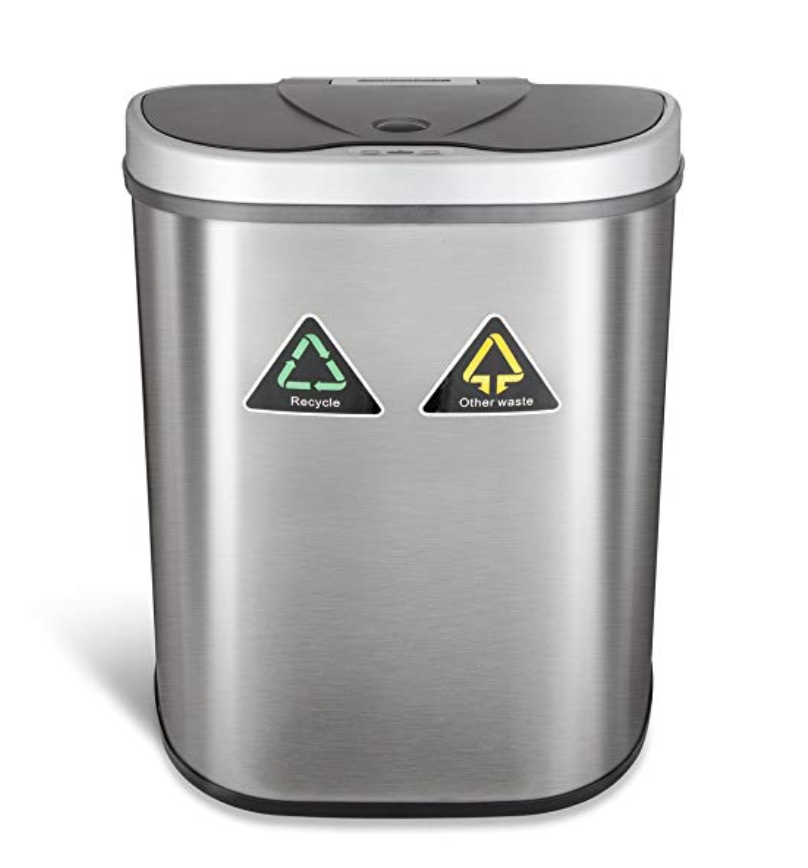
Recycling Programs for tattoo studios and disposable tattoo products
There is no carbon footprint if you and your studio participate in a recycling program! Below are companies to handle your studios plastic waste.
Central Ohio medical waste recycling -
https://stericycle.com
Recycling program for studios -
https://www.medprodisposal.com/does-medical-waste-get-recycled
There are many items that a tattoo artist uses daily during a single tattoo procedure that do not get recycled that are considered to be somewhat unfriendly to the earth and environmentally unsafe.
Many of these items like plastic cups, plastic/ nylon caps, machine bags and bottle covers, clip cord covers, excessive inks, rubber bands, petroleum ointments, rinse cup solidifiers, latex gloves, nitrile gloves and medical tape to name just a few.
There are many other items used everyday in tattoo studios that are Eco-unfriendly as well including, latex gloves, used needles and needle bars, cold sterilization spray chemicals for counter tops that get disposed of in the trash, tube sterilization bags with plastic fronts, steel and plastic from razor blades and companies throwing away entire steel tips and barrels each client.
Chemicals are also everywhere, not to mention the tools and chemicals that are used in a studio’s sterilization rooms that are typically poured down the drain and back into the environment.
We are very fortunate in the U.S. to have an excellent and readily available healthcare system. However, maintaining such a system requires many behind-the-scenes support services that many of us are unaware of or take for granted. Managing medical waste is one such service. Every day, a wide range of potentially infectious or chemical waste is created requiring special disposal; this includes needles from routine vaccinations, tumors removed from patients, trace chemicals remaining in an IV line, or bloodied supplies from treating an accident victim. Of millions of tons of waste generated from our hospital systems each year, just 6-8% (per Practice Greenhealth) is considered “regulated medical waste” requiring treatment from companies like Stericycle. While most people think that all regulated medical waste is incinerated, only about 10% is treated via incineration.
What is Medical Waste Incineration?
Medical waste incineration is the process of burning specific wastes, including pathological, trace chemotherapy and non-hazardous pharmaceutical wastes as it is considered the safest, most effective means of treatment and prevents harm to the environment and our health in general. There are alternatives to incineration including autoclaving, chemical treatments, or ozone disinfection, but these technologies are admittedly incapable of completely destroying certain medical wastes, such as pharmaceuticals and specific pathological wastes. In fact, 31 states require incineration of certain medical waste, and the EPA currently recommends incineration of pharmaceuticals to avoid the possibility of water contamination.
Link for more information on incineration
___________________________________________
Recycling Trash Cans for tattoo studios -
Rubbermaid Slim Jim Recycling Stations - CLICK HERE
___________________________________________
Recycling program for studios -
https://www.medprodisposal.com/does-medical-waste-get-recycled
___________________________________________
RECYCLING ARTICLES:
https://www.theguardian.com/us-news/2019/jun/21/us-plastic-recycling-landfills
https://www.wastedive.com/news/what-chinese-import-policies-mean-for-all-50-states/510751/
One major way we are increasing the amount of medical waste that is recycled is simply by putting plastic and non-plastic medical waste in separate containers. Doing this allows the facility that disposes of the collected medical waste to quickly sort through and recycle the plastic waste.
Pfiedler, a company that specializes in continuing medical education, says that operating rooms created between 20%-33% of total waste generated in a hospital. The problem with this is that many of the items used in an operating room must obviously be sterile, and the safest way to ensure this is to have single use items such as IV bags, sterile blue wrap, etc.
As it turns out, most of these single use items are plastic.
In a breakthrough discovery Pfiedler found out that almost 23% of surgical waste could be recycled.
How Is Medical Waste Recycled?
Thankfully, most of the plastic waste was easily recycled by sterilizing it, melting it down and then reusing it.
Across the world organizations such as the EPA, the WHO, and some private research companies have been working hard at finding out more efficient ways to recycle medical waste.
One major way we are increasing the amount of medical waste that is recycled is simply by putting plastic and non-plastic medical waste in separate containers. Doing this allows the facility that disposes of the collected medical waste to quickly sort through and recycle the plastic waste.
So, while it’s still a developing practice, recycling medical waste is growing fast. Do your part in reducing medical waste pollution and check out our Complete Guide to Biohazard Waste Disposal to make sure you aren’t putting trash in the red bag that should go in the garbage instead!
https://www.medprodisposal.com/the-complete-guide-to-biohazard-waste-disposal/amp